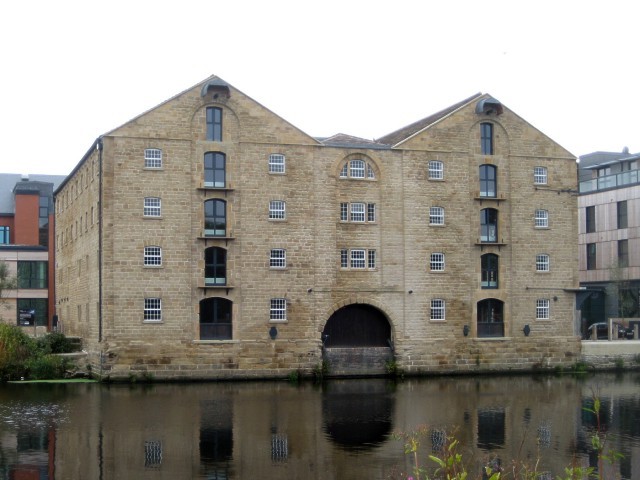

Combs Colliery.[1]
Reproduced with the permission of the National Library of Scotland
Combs Colliery, a deep coal pit, was sunk by the Ingham family between 1855 and 1857 on land leased from the Saviles at Combs, in ThornhillFormer township, now a suburb of Dewsbury in Kirkless, West Yorkshire., West Yorkshire.[2]
The pit, on top of the hill to the east of Thornhill village, was sunk 114 yards (104 m) to access the New Hards seam. It had two brick-lined shafts, the downcast was 11 feet (3 m) in diameter and the upcast pumping shaft was 12 feet 6 inches (31.7 cm) in diameter. Pumping was required to drain water from old workings. The colliery was originally linked to the Calder and Hebble Navigation
Constructed between 1758 and 1834, the navigation makes the River Calder navigable between Sowerby Bridge and Wakefield in the West Riding of Yorkshire. by a rope-hauled incline. In 1872 the Inghams employed 360 men and boys at Combs and its other smaller pits.[2]
Combs Colliery survived to be nationalisedStatutory corporation created to run the coal mining industry in the United Kingdom under the Coal Industry Nationalisation Act 1946. in 1947, and became part of Thornhill CollieryFormer colliery in the West Riding of Yorkshire, worked from the 16th century until 1972. in 1948.[3]
Disasters
On 4 July 1893 an underground explosion of firedampDamps is a collective name given to all gases other than air found in coal mines in Great Britain. The chief pollutants are carbon dioxide and methane, known as blackdamp and firedamp respectively. killed 139 men and boys, some as young as 12.[4] Only 7 of those working underground at the pit that day survived.[5]

